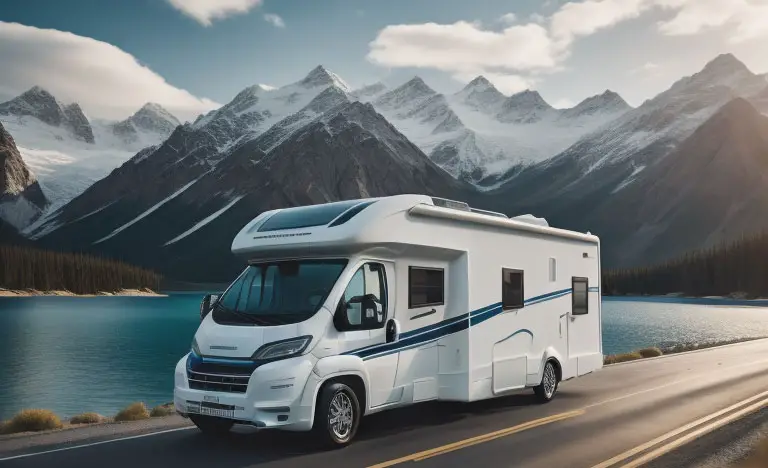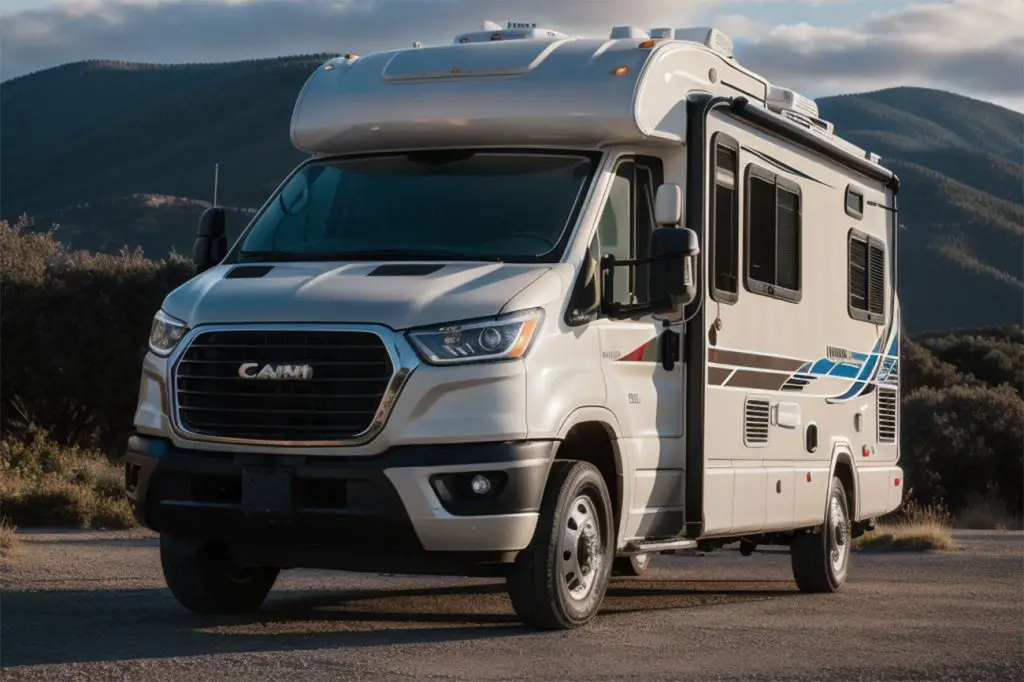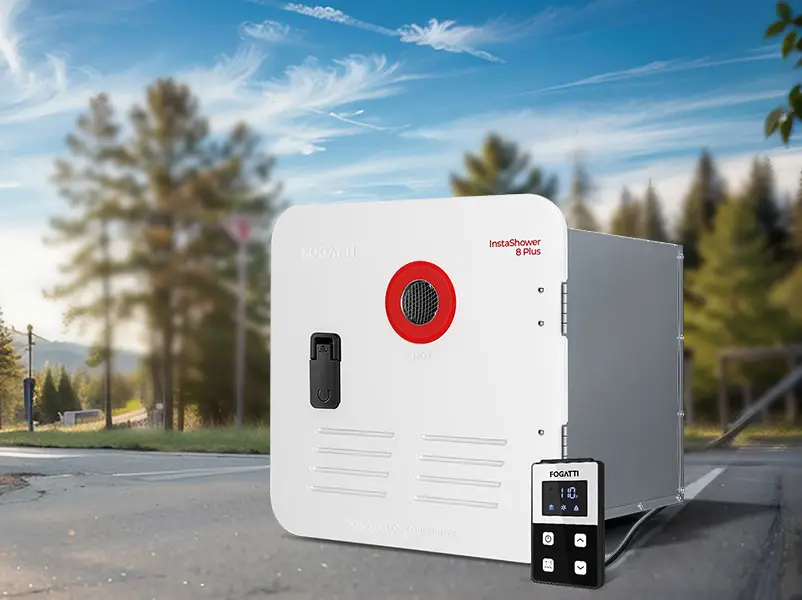Last Updated on February 13, 2024
Key Takeaways:
- Purchasing an RV Online:
- Clearly define your requirements and priorities for an RV.
- Utilize online platforms such as RVTrader, RVs.com, and Camping World for extensive listings.
- Carefully read descriptions, and specifications, and examine photos of RV listings.
- Research the seller’s credibility, and reputation, and contact them for further inquiries.
- Arrange for a professional inspector to evaluate the RV before finalizing the purchase.
- Finding Ways To Ship The RV:
- Research reputable and experienced shipping providers.
- Compare services, customer reviews, insurance coverage, and pricing.
- Determine the appropriate shipping method (flatbed transport or enclosed transport).
- Obtain measurements of the RV for the shipping provider.
- Preparing the RV for Transport:
- Take detailed photographs of the RV from various angles.
- Inquire about insurance coverage provided by the shipping company.
- Review and understand the terms and conditions outlined in the shipping contract.
- Inspect The RV At Arrival:
- Conduct a thorough inspection comparing the current condition to pre-shipping documentation.
- Note any damages or discrepancies in the delivery documentation provided by the shipping company.
- Use the documentation to address concerns or file insurance claims if necessary.
In today’s digital era, the online marketplace has witnessed a significant rise in the purchase of cars and recreational vehicles (RVs). This shift in consumer behavior has unlocked a world of possibilities, allowing buyers to explore and acquire their dream RV from sellers located across the country. However, when it comes to purchasing an RV that is located far away, certain challenges arise, necessitating careful planning and attention to logistics. Let me present you with a comprehensive guide on shipping an RV purchased online, offering valuable insights into key considerations, essential preparation steps, and the process of finding a trustworthy shipping provider. Whether you’re embarking on your first RV purchase or seeking to enhance your knowledge in this domain, this guide will provide you with the necessary information to ensure a smooth and successful shipping experience.
Purchasing an RV Online
The process of searching for an RV online can be exciting, but it requires careful consideration to find the perfect vehicle that meets your needs and preferences.
Before starting your search, clearly define your requirements and priorities for an RV. Consider factors such as the size, layout, features, amenities, and budget. Understanding your needs will help narrow down your options and make the search more focused.
You can use websites such as RVTrader, RVs.com, and Camping World to provide extensive listings, allowing you to browse through a wide range of RV options. These platforms often offer advanced search filters, enabling you to refine your search based on specific criteria.
When exploring RV listings, take the time to carefully read the descriptions and specifications provided by the sellers. Look for information regarding the RV’s condition, age, mileage, maintenance history, and any additional features or upgrades. Pay attention to any potential issues or disclosures mentioned by the sellers. Photos are an essential aspect of online RV listings. Thoroughly examine the available photos, as they provide visual insight into the RV’s interior, exterior, and overall condition. Some listings may also include virtual tours or 360-degree images, offering a more immersive viewing experience.
Before making any commitments, conduct research on the seller to establish their credibility and reputation. Check for seller ratings, reviews, and feedback from previous buyers. Additionally, verify if the seller is a licensed dealer or a private individual, as this may influence your decision-making process. If you have any questions or require further information about a specific RV, don’t hesitate to reach out to the sellers. Contact them through the provided communication channels, such as email or phone, and inquire about any uncertainties you may have. Clear communication with the seller can provide valuable insights and help you make an informed decision.
Before finalizing your purchase, it is advisable to arrange for a professional inspector to evaluate the RV and provide you with a detailed report. This step ensures that you have a comprehensive understanding of the RV’s condition and can make an informed decision.
Finding Ways To Ship The RV
When it comes to shipping an RV, it’s crucial to select a reputable and experienced shipping provider. Research different companies and compare their services, customer reviews, insurance coverage, and pricing. Look for providers specializing in RV transport to ensure they have the necessary equipment and expertise to handle your specific needs.
RVs can be transported using various methods, each with its own advantages and considerations. The common methods include:
- Flatbed Transport: This method involves loading the RV onto a flatbed trailer. It is suitable for smaller RVs, and the vehicle remains exposed to the elements during transport.
- Enclosed Transport: Enclosed trailers protect from weather conditions and road debris. This method is ideal for larger RVs or when you want to ensure maximum security and protection during transit.
Before arranging the shipment, you will need measurements of your RV, including its height, width, length, and weight. This information is crucial for the shipping provider to determine the appropriate trailer size and to comply with legal transportation regulations.
- The Best Small Motorhomes to Live In Full Time
- The Smallest and Lightest Toy Hauler Options for You
- Travel Trailers Under 15k – 2023
- Tips To Make RVing Friends While RVing Solo
[amazon table=”11071″]
Preparing the RV for Transport
To ensure the safe transportation of your RV purchased online, there are a few important steps to follow. Firstly, it’s crucial to have detailed photographs of the RV from various angles before shipping. These photographs serve as valuable documentation of the RV’s condition prior to transportation and can be immensely useful for insurance purposes in the event of any damage during transit. By having this visual evidence, you can protect yourself and ensure that any discrepancies are properly addressed.
Next, it’s essential to inquire about the insurance coverage provided by the shipping company. Understanding the extent of coverage for potential damage or loss during transport is paramount. Take the time to carefully review the insurance policy offered by the shipping company and make sure it aligns with your needs. If necessary, consider purchasing additional insurance to ensure comprehensive protection for your RV. This additional coverage can provide peace of mind and safeguard your investment throughout the shipping process.
Once you have addressed the insurance aspect, it’s time to carefully review the contract provided by the shipping company. Pay close attention to the terms and conditions outlined in the contract, as well as any liability clauses, delivery timeframe specifications, and any additional fees or requirements. It’s important to have a clear understanding of the agreement before finalizing it. If you have any concerns or uncertainties, do not hesitate to seek clarification from the shipping company. Clear communication is crucial to ensure that both parties are on the same page and that all expectations are properly addressed.
Inspect The RV At Arrival
Finally, when your RV arrives at its destination, it is imperative to conduct a thorough inspection. Compare the current condition of the RV to the documented condition before shipping. Carefully examine the exterior and interior for any damage or discrepancies that may have occurred during transit. Note down any issues on the delivery documentation provided by the shipping company. This documentation serves as a record of the RV’s condition upon arrival and can be used to address any concerns or file insurance claims, if necessary.
Shipping an RV purchased online requires careful planning and consideration to ensure a smooth and secure transport experience. By conducting thorough research, choosing a reliable shipping provider, preparing your RV appropriately, and understanding the terms and insurance coverage, you can confidently ship your newly purchased RV to your desired location. Remember, proper preparation and attention to detail are key to safeguarding your investment and enjoying the










